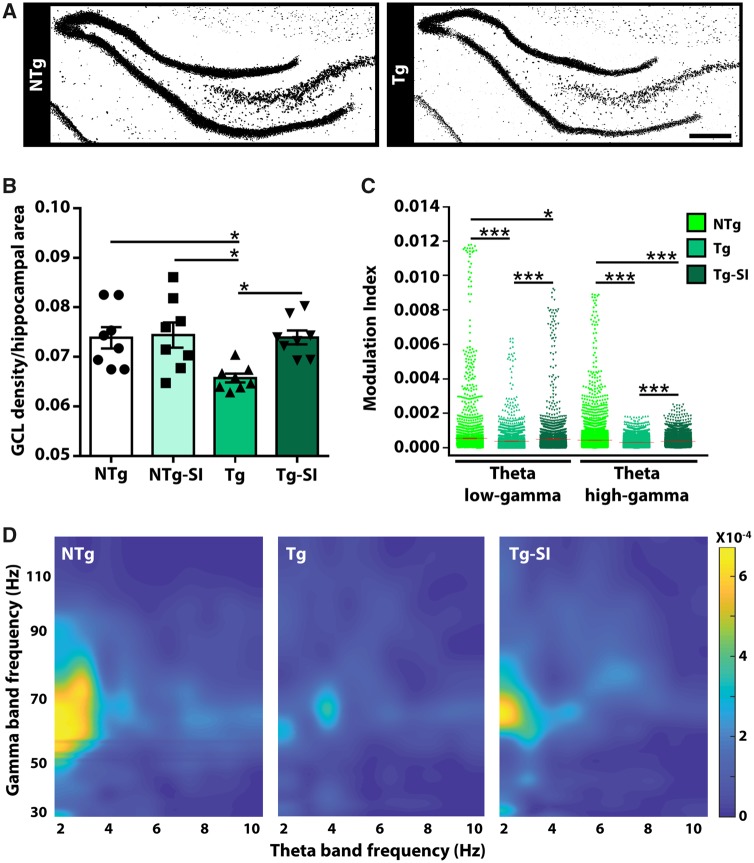Figure 4.
Rescue of hippocampal neuronal density and function in treated TgF344-AD rats. To determine if loss of hippocampal neurons and/or function contribute to the behavioural phenotypes, we determined neuronal density and cross-frequency coupling by in vivo electrophysiology. (A) Tg rats display a significant loss of NeuN (black) staining in the hippocampus, compared to NTg rats. Scale bar = 400 μm. (B) The density of NeuN staining in the granule cell layer (GCL) of Tg rats is significantly decreased by 11 ± 3.6 %, compared to NTgs, and is rescued by amyloid-β attenuation (n = 8). (C) TgF344-AD rats have impaired modulation between theta low-gamma and between theta high-gamma bands in the hippocampus, which are rescued by amyloid-β attenuation (NTg n = 8; Tg/Tg-SI n = 7). (D) 3D maps of phase amplitude coupling in the hippocampus (representative rat for each cohort) were generated by computing the modulation index as a measure of the coupling between the phase of the theta band with the amplitude of the gamma band. Modulation index values were encoded by colour and plotted according to theta and gamma frequency. 3D maps demonstrate a deficit in untreated Tg compared to NTg rats, and rescue by amyloid-β attenuation (mean ± SEM (indicated by a red line in C], one-way ANOVA with Holm-Sidak post hoc test (B), or with t-test with false discovery rate correction (C), *P < 0.05; ***P < 0.001.

